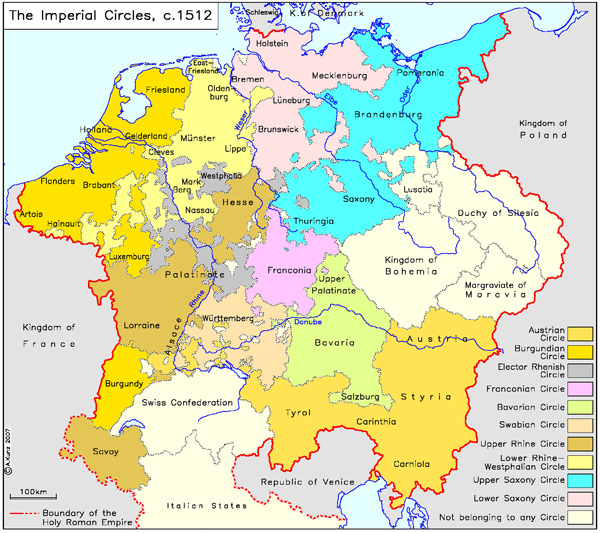













INTRODUCTION | DOCUMENTS | IMAGES | MAPS | EDITOR
|
The Imperial Circles did not encroach upon the territorial integrity of the existing duchies, counties, etc. The need for an administrative and executive organization, much discussed during the fifteenth century, did not gain any concrete form until the Imperial Diets held between 1495 and 1512. The Circles strengthened the princes’ predominant role in the Imperial Diet [Reichstag], an enduring characteristic of the Imperial constitution, which did not develop further in the direction of a centralized or federal nation-state. Please click on print version (below) for a PDF file with enhanced resolution. This file is best viewed at 200-300%.
IEG-Maps, Institute of European History, Mainz / © A. Kunz, 2007
|
 print version
print version return to map list
return to map list previous map
previous map
